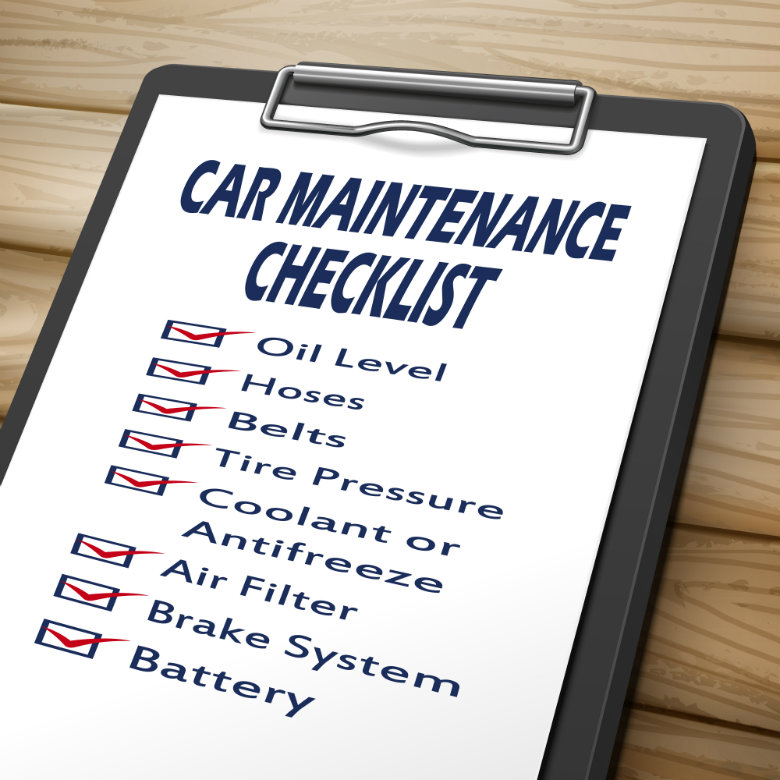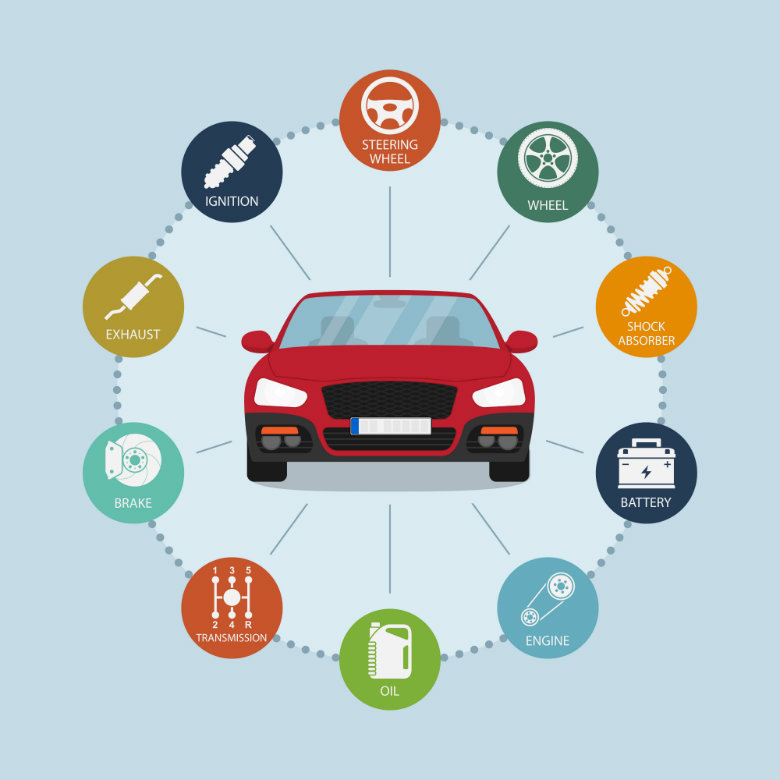
Why is Preventative Car Maintenance Important?
Having a car requires that you take care of it through routine car maintenance. All parts of the vehicle, including the engine, brakes, lights, tires, and much more, must be repaired overtime. Why is upkeep so important?
Preventative car maintenance is necessary for a multitude of reasons. Below you will find a list outlining a few these reasons:
- Longevity of your automobile. Routine car maintenance extends the life of your vehicle, ensuring that the car lasts you a long time. Periodically checking fluids, getting regular oil changes, and caring for minor repairs are just a few ways to keep your car running smoothly for as long as possible.
- Safety and reliability. Driving can be dangerous. Therefore, periodic fixes help avoid an engine misfiring due to a worn spark plug or decreased visibility from a burnt-out headlight. It also assures you that you can rely on your car to get you where you need to go.
- Increased fuel efficiency. There are many factors that influence fuel economy. Some major causes of decreased gas mileage result from not getting regular oil changes or tire rotations, as well as not checking tire pressure frequently.
- Saves you money. Servicing your automobile, as you should, will save you money in the long run. Routine vehicle upkeep will reduce your chances of serious car trouble in the future that result when problems go unresolved.
A car has many parts, all of which require special attention and care, to ensure that the machine functions properly. We will discuss all of the various parts of your vehicle that need maintenance. In addition, we will review the warning signs and timeline associated with maintaining these components.

General Car Maintenance
It is apparent that routine car maintenance is important in keeping your car running like new, longer. According to a survey completed by the Car Care Council, eighty-nine percent of the reviewed drivers had vehicles that were in need of at least one maintenance repair. This suggests that many individuals do not care for their automobile like they are supposed to.
Are you giving your vehicle the TLC it deserves? Our hope, through this post, is to make more people aware of the importance of regular car maintenance. We have assembled a list of car features that need to be addressed when caring for your vehicle.
Car Care Guideline:
This list is to be treated as a guideline for general car maintenance. It does not include all of the components of a vehicle, as a car is composed of thousands of parts. You can easily complete some of these maintenance tasks yourself, while others require the work of a trained professional.
Car Interior/Exterior
- Dashboard Indicator Lights: There are over 150 different indicator lights on a car’s dashboard. Lights indicating to check the engine, oil pressure, and tire pressure are just a few of the numerous possibilities you may see illuminated. These lights can notify you of a problem before you are aware that one even exists. Check your dash frequently to ensure that your vehicle does not sense any complications. Although a “Check Engine” light may simply be caused from a loose gas cap, it is better to be safe than sorry.
- Headlights: A car’s headlights can last up to two years. However, these parts will eventually burnout and need replacing. Proper headlight maintenance is important, so that drivers can see in hazardous conditions, such as at night and in stormy weather. Visibility is crucial, because if you cannot see, then you cannot react to possible dangers on the road.
- Tires: Every three months, you should inspect the wear, tread, and pressure of your tires. Check for bald spots when assessing the tread. Uneven wear on the tires indicates the need for a wheel alignment. Use the penny trick to evaluate a tire’s tread. Place a penny face down, so Abraham Lincoln’s head is in one of the grooves. If any part of Lincoln’s head is hidden, your tire’s tread is within a safe range. However, if you can see above Lincoln’s head where it reads “In God We Trust”, then it is time to replace the tire. Also, ensure that the tires contain the appropriate amount of air. Under-inflated tires can lead to lower fuel efficiency, paying up to five cents more per gallon.
- Wiper Blades and Windshield: It is recommended that windshield wipers be replaced approximately every six months to a year. Wiper blades are flexible, made of rubber, and endure extreme temperatures and conditions. Therefore, windshield wipers are prone to cracking after extended use. Neglecting to change wiper blades can result in damages to the windshield and obstructions to vision. When checking your windshield wipers, you should also inspect the windshield for chips that could grow into large cracks.
- Brakes: Brake pads are vital for safety and vehicle performance. These parts should be inspected and changed every 45,000 miles. Hearing screeching, grinding, squealing, or rubbing noises are all indicators of a possible brake problem.
- Proper Cleaning: Washing the exterior of your car is essential in preserving the paint job. Dirt, dust, and grime can build up on a automobile’s surface. Without regular cleaning, these materials will chip away at the car’s paint. It is also important to take care of your car’s interior. Steering wheels, dashboards, and leather seats are capable of cracking and fading from the sun’s harsh rays. For more information, check out our blog post on How to Clean Your Car Properly: Inside and Out.
Under the Hood
- Fluids: Check the fluid levels in your vehicle. This would include antifreeze and coolant, brake fluid, transmission fluid, oil, windshield washer fluid, and power steering fluid. These fluids are all important for different reasons. Antifreeze and coolant are necessary to keep the engine from getting too hot, while windshield washer fluid is critical in maintaining a clear line of vision. Many of these fluids do not need to replaced until one to two years. However, it is best to check levels monthly. How often a vehicle’s oil needs to be changed is dependent upon driving habits and the type of oil used. Typically, a car will need an oil change every 3,000 to 10,000 miles, but it is best to check the manual.
- Engine/Cabin Air Filter: An engine air filter prevents harmful contaminants from entering the engine. A cabin air filter performs similar duties but for the interior of the automobile. It is in charge of filtering the air that comes through the car’s HVAC System to prevent dust, pollen, and smog from seeping in. These air filters should be replaced every 15,000 to 30,000 miles. Overtime, they will become extremely dirty and brittle. Signs of a possible dirty engine air filter include unusual engine sounds, smoke from exhaust, and misfiring engine.
- HVAC System: As Summer is quickly approaching, you will become strongly reliant on your vehicle’s air conditioning system. A car’s HVAC System is critical for maintaining comfortable driving conditions and visibility through the defrost function. Without this system, your drive to work would be miserable. Ensure that the vents are blowing out air as they should and at the appropriate temperature.
- Hoses and Belts: Hoses and belts are valuable vehicle parts. Without them, engine failure is a possibility. Check these pieces of equipment to ensure that they are not cracked, brittle, frayed, or showing any signs of extensive wear. As a rule of thumb, you should replace these parts every three to five years or every 50,000 miles.
- Battery: An automotive battery provides the energy needed to start the engine. After continued use, the battery will lose juice. You do not want to be stuck in the middle of nowhere with a dead battery. Keep this from happening by asking your mechanic to check the battery every time you bring your automobile in. Batteries usually need to be replaced every three to four years.
- Spark plugs: Spark plugs ensure engine performance and longevity. Carelessness in spark plug maintenance can lead to engine misfires. Replacement means smoother starts rather than jerky ones, as well as less harmful emissions. Be on the look-out for rattling sounds, trouble starting, or reduced performance. These are all warning signs that a spark plug needs to be replaced. Replace spark plugs approximately every four to six years

How to Make Car Maintenance Easier
With car maintenance, there is a lot to keep up with. Although not everything needs to be done at one time, it still requires an immense amount of work. You must remember what needs to be done and at what time. How do you accomplish this?
There are many different ways to stay organized. Here are a few ways to take the headache out of maintaining your automobile:
- Use Mobile Apps. There are numerous apps available on your mobile phone that can be used to manage car maintenance needs. You can find both paid and free apps. These include apps such as CarMinderPlus, myCARFAX car maintenance, Car Care, BitKar, and many more. They can be utilized to track fuel economy and countdown time to repairs.
- Mark it on a Calendar. Track your upcoming vehicle maintenance appointments on your calendar. You can use your phone to receive notification reminders as the date approaches.
- Make a Car Maintenance Checklist. If you are crafty and skilled with Microsoft Office Suites, make a checklist on your own to stay on top of necessary maintenance tasks. Otherwise, use the internet to find a free printable checklist to make your life easier. Pinterest is a good resource to use for free print-outs.

Importance of Car Maintenance in Auto Transport
If you are a car collector, vacationer, military personnel, or individual moving across the country, you may use an auto transport company to move your automobile. Utilizing auto transport services saves you time, energy, and stress. A long trip means thousands of miles on the vehicle, so auto transport saves you the accumulation of miles and the wear that comes with it.
Vehicle maintenance is crucial before, during, and after the auto transport process. Here is why:
- Your car may be positioned on a two-level auto transport carrier. Why is this important? If your automobile goes without service and is positioned on the top level, it could leak oil on to a vehicle below it. You would not want this to happen to your car if the situation was reversed. Therefore, you should make sure that your vehicle is up to date on all the required services before auto transport.
- You want your automobile to be ready when you arrive. Upon moving across the country, it would be a hassle to have to complete a long list of car maintenance tasks before being able to safely drive your vehicle. It is better to take care of everything before auto transport. This way you can drive your car as soon as it is delivered.
You put in a great deal of time into preserving the life of your automobile. Preventative vehicle maintenance involves caring for all the components of the car. This includes monitoring the lights, tires, brakes, windshield, fluids, filters, spark plugs, and more. It may seem like a hassle to complete everything, but these parts are all important in retaining a safe and reliable vehicle.
To make your life easier, why not consider hiring an auto transport company? In the future, let a professional take your car where it needs to go. National Dispatch is dedicated to providing excellent customer service, answering any questions or concerns you may have and serving each individual’s unique needs. We always ship the vehicle in a safe and secure manner, because we understand how much your car means to you.
For a free, instant car shipping quote go to https://www.nationaldispatch.com/ to use our online quote calculator. No personal information is required, just four simple fields. You can also call 800-321-2051 to talk with one of our auto transport professionals.
